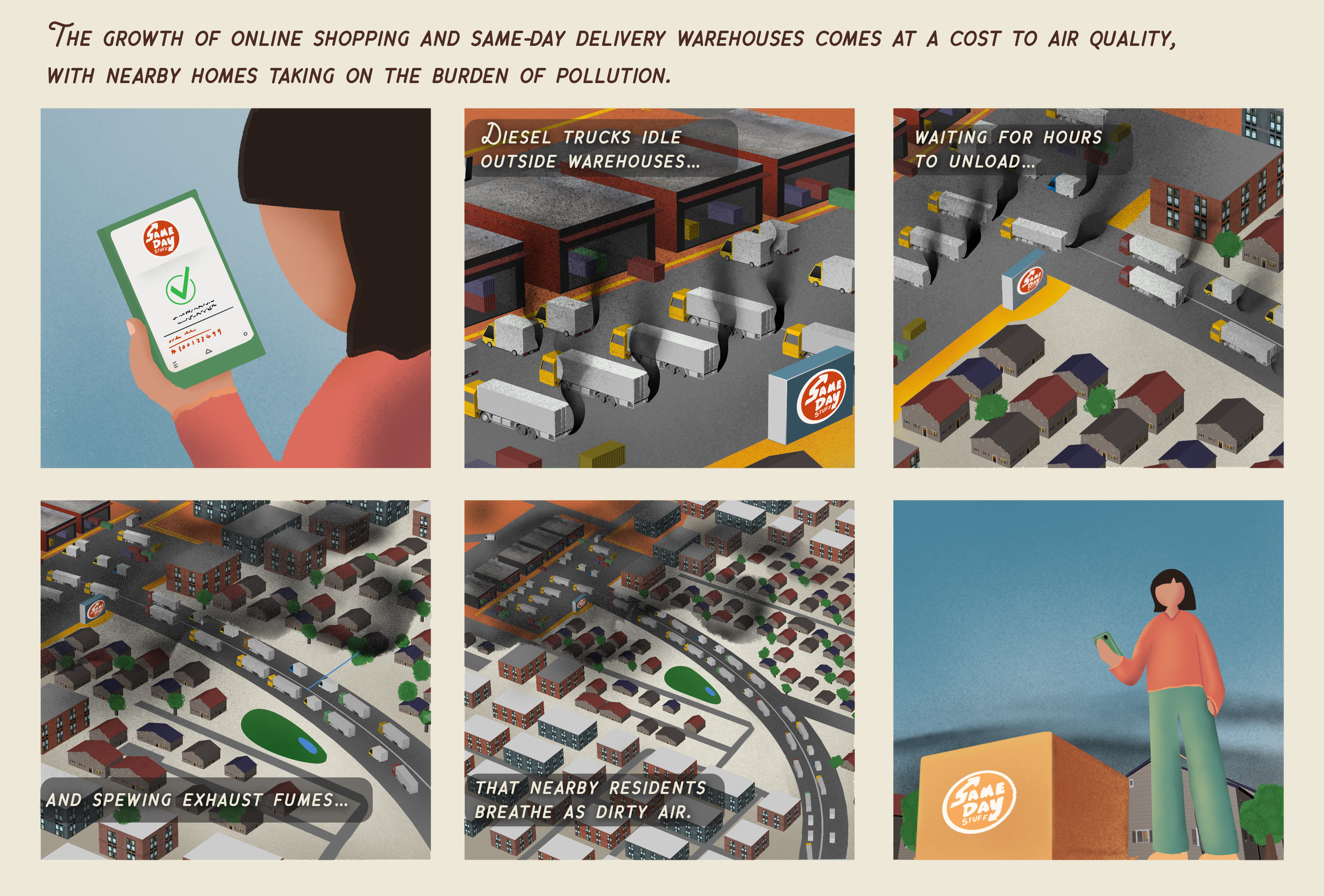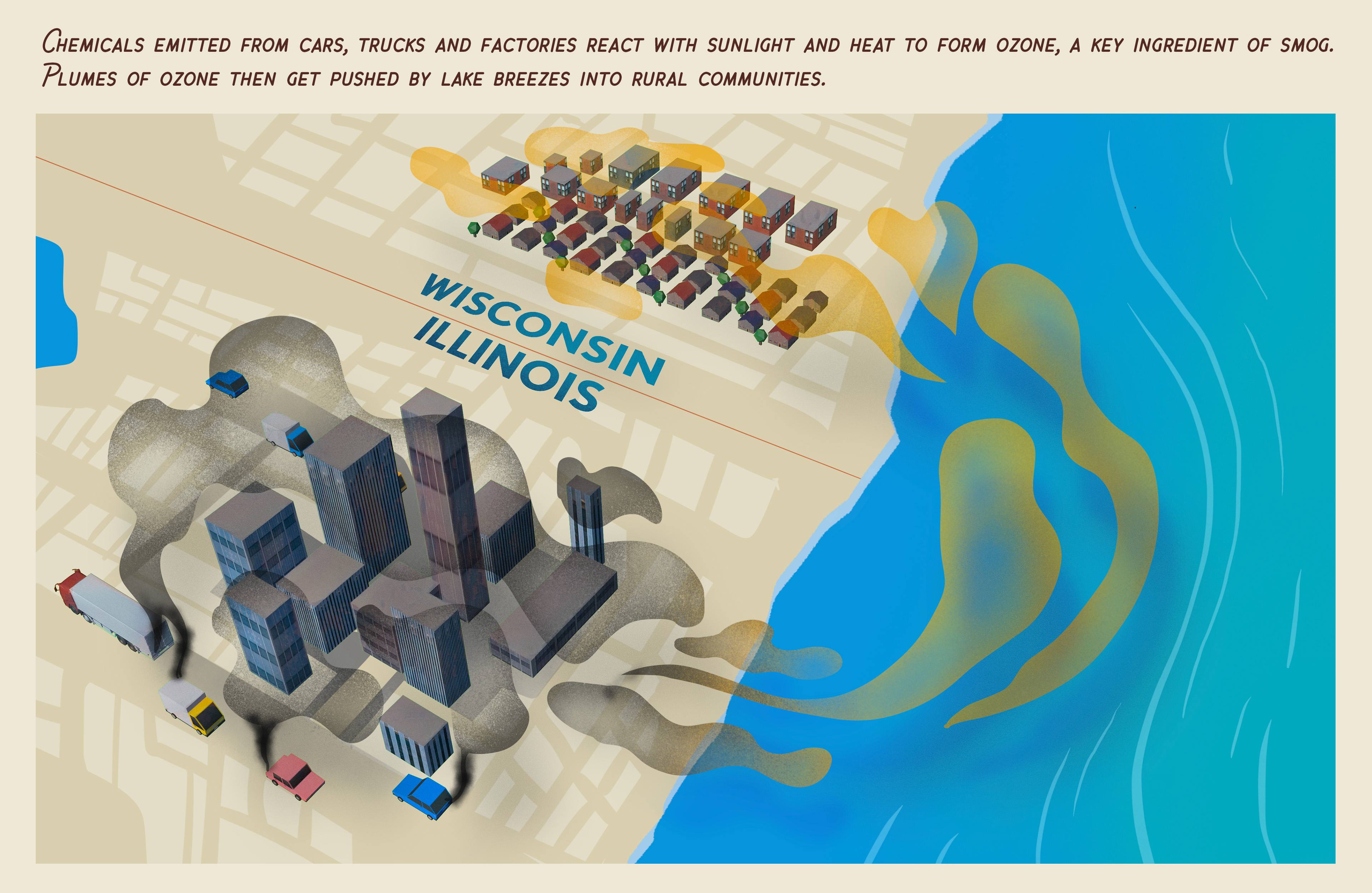Earth
ID: 14442
While poor air quality affects everyone, there are pollution hotspots that can adversely affect those nearest. For example, neighborhoods located near highways and warehouses can be hotspots of nitrogen dioxide (NO2) and hazardous particles called PM2.5, which are more than 35 times smaller in diameter than a grain of sand.
For other residents, such as those located downwind from major cities like Chicago and New York, ozone can be an issue. While ozone high in the atmosphere protects Earth from dangerous solar radiation, at the ground level it can cause respiratory diseases and drive smog. Ozone ‘brewed’ in cities can travel to rural communities.
Ground-level ozone along with another hazardous pollutant – tiny particles called PM2.5 – lead to over 100,000 premature deaths each year in the U.S.



STAQS Air Quality Conceptual Illustrations
For other residents, such as those located downwind from major cities like Chicago and New York, ozone can be an issue. While ozone high in the atmosphere protects Earth from dangerous solar radiation, at the ground level it can cause respiratory diseases and drive smog. Ozone ‘brewed’ in cities can travel to rural communities.
Ground-level ozone along with another hazardous pollutant – tiny particles called PM2.5 – lead to over 100,000 premature deaths each year in the U.S.



Related
Credits
Kim Dongjae (KBR Wyle Services, LLC): Lead Animator
Kathleen Gaeta (Advocates in Manpower Management, Inc.): Producer
Sally Younger (NASA/JPL): Writer
Walt Feimer (KBR Wyle Services, LLC): Animator
Katie Jepson (KBR Wyle Services, LLC): Project Support
Jenny Marder Fadoul (Telophase): Project Support
Aaron E. Lepsch (ADNET Systems, Inc.): Technical Support
Kathleen Gaeta (Advocates in Manpower Management, Inc.): Producer
Sally Younger (NASA/JPL): Writer
Walt Feimer (KBR Wyle Services, LLC): Animator
Katie Jepson (KBR Wyle Services, LLC): Project Support
Jenny Marder Fadoul (Telophase): Project Support
Aaron E. Lepsch (ADNET Systems, Inc.): Technical Support
Please give credit for this item to:
NASA's Goddard Space Flight Center
NASA's Goddard Space Flight Center
Short URL to share this page:
https://svs.gsfc.nasa.gov/14442
Keywords:
DLESE >> Atmospheric science
DLESE >> Environmental science
GCMD >> Earth Science >> Atmosphere >> Air Quality
NASA Science >> Earth
SVS >> Animation
GCMD keywords can be found on the Internet with the following citation: Olsen, L.M., G. Major, K. Shein, J. Scialdone, S. Ritz, T. Stevens, M. Morahan, A. Aleman, R. Vogel, S. Leicester, H. Weir, M. Meaux, S. Grebas, C.Solomon, M. Holland, T. Northcutt, R. A. Restrepo, R. Bilodeau, 2013. NASA/Global Change Master Directory (GCMD) Earth Science Keywords. Version 8.0.0.0.0
https://svs.gsfc.nasa.gov/14442
Keywords:
DLESE >> Atmospheric science
DLESE >> Environmental science
GCMD >> Earth Science >> Atmosphere >> Air Quality
NASA Science >> Earth
SVS >> Animation
GCMD keywords can be found on the Internet with the following citation: Olsen, L.M., G. Major, K. Shein, J. Scialdone, S. Ritz, T. Stevens, M. Morahan, A. Aleman, R. Vogel, S. Leicester, H. Weir, M. Meaux, S. Grebas, C.Solomon, M. Holland, T. Northcutt, R. A. Restrepo, R. Bilodeau, 2013. NASA/Global Change Master Directory (GCMD) Earth Science Keywords. Version 8.0.0.0.0











